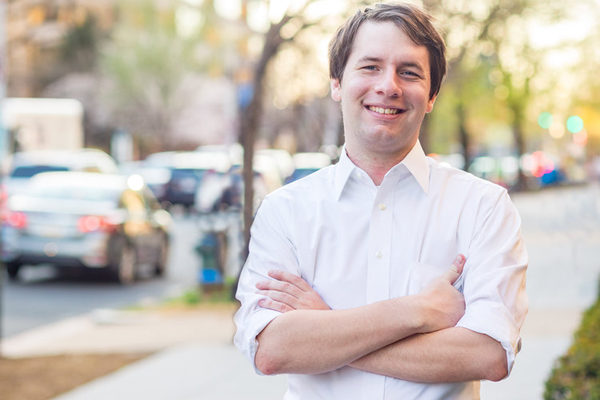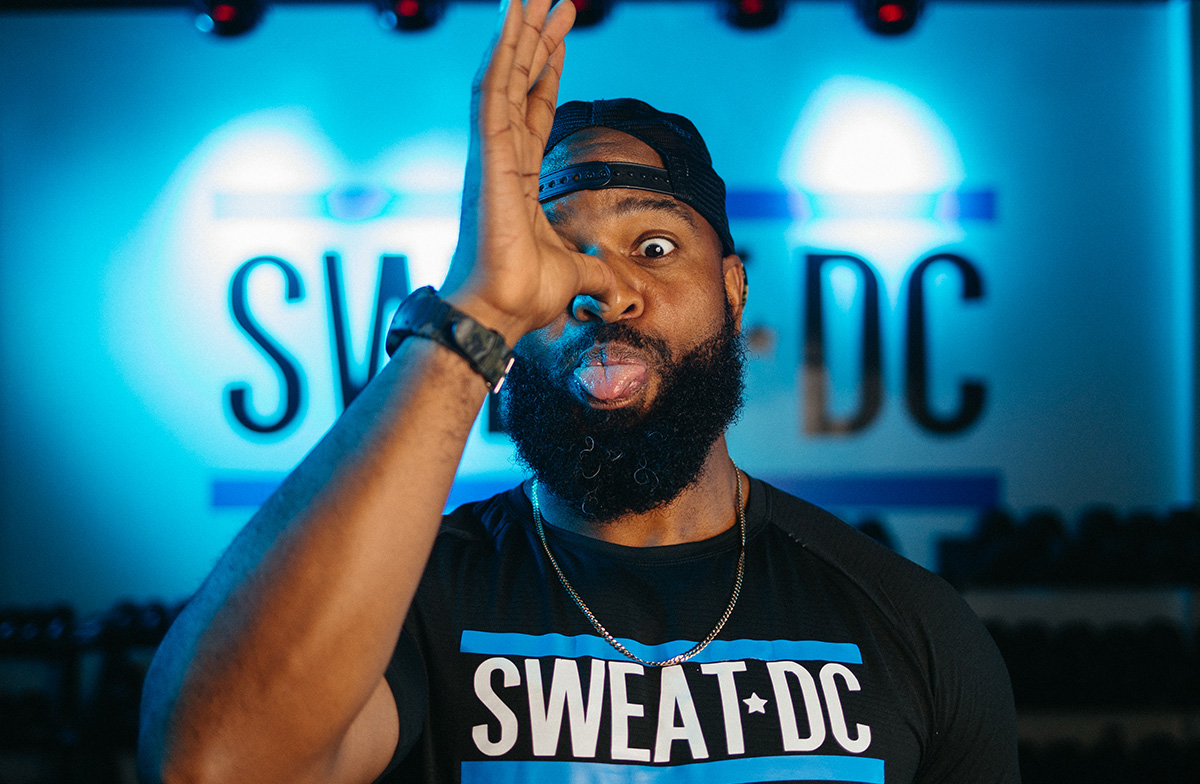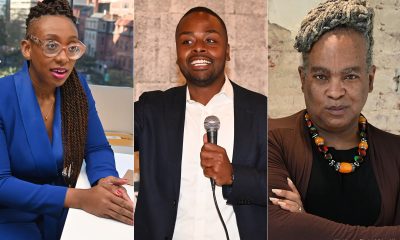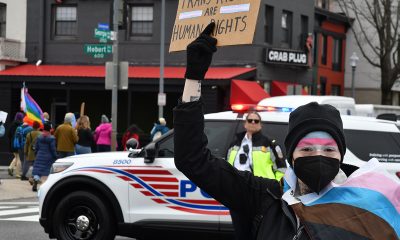Opinions
Patrick Kennedy for Ward 2 Council member
A strong record of working with every sector of the community


As a Ward 2 resident for more than 35 years, I have had only two people represent me on the D.C. Council. The first, John A. Wilson, had the D.C. government building named after him. The second, Jack Evans, was forced out of office for improprieties. On June 2 in the Democratic primary and June 16 in the special election for Ward 2, voters have the opportunity to choose a third representative. We need to elect someone who will make us proud.
One person stands out among a group of qualified candidates. His relevant experience at the ward and community level, and his living by a set of steadfast progressive and honest principles, make Patrick Kennedy that candidate. He recently said: “In these difficult days I am committed to serving the residents of Ward 2 in an honest and transparent way to meet all their needs. I am committed to helping as we weave our way through tough times with a special focus on the economic and health inequities that have been highlighted due to the Coronavirus pandemic. Together we will not only survive we will thrive. The Council will be my full-time job and the only people I will owe anything to are the residents of Ward 2. As new issues arise you have my commitment to work on each one to the best of my ability and to meet and exceed your expectations.”
Ward 2 is a dynamic part of the District and includes a diverse group of stakeholders, including a large part of the District’s business community. Balancing the needs of business with the needs of individuals is not always easy but must be the goal of the Council member representing the ward. Patrick has community and ward experience, including eight years on the ANC, being chair for five terms. Relevant experience is based on what the job of a Ward Council member is. The job includes oversight of D.C. government agencies; approval of the D.C. budget; and just as important the ability to provide good constituent service to the residents of the ward. Being chair of an ANC gave Patrick a detailed understanding of D.C. government agencies and how they relate to both individuals and the community. A Council member must have knowledge of zoning, local education issues, transportation issues, and know how the programs of D.C. government from DDOT, to DOES, to DCRA, the bane of everyone’s existence, work. It means getting into the weeds on rat (the four legged kind) abatement and knowing how to help a constituent get a street lamp fixed. It is why experience on an ANC is so relevant to the job.
Another reason I am endorsing Kennedy is my belief it is crucial for our city that young people become involved and take leadership roles. When they do, we must support them. Kennedy represents the best of the young generation of the District. For 10 years he has spent countless hours as an ANC volunteer member and chair working for the people of the ward and the city. He sees himself as a bridge-builder, someone who understands the needs and interests of different communities and he has shown he is able to collaborate with a wide range of people with varied interests and forge consensus and come up with solutions to problems. I found he has a nuanced understanding of public policy and has shown empathy and understanding of people from all different backgrounds and perspectives.
Ward 2 has the largest number of people who identify with the LGBTQ+ community in the District and while Patrick is not gay his work for — and vocal support of — the community has attracted many activists to his campaign. He has committed to have the city do a much better job of providing equity-based initiatives, which will impact the LGBTQ community. He supports improving hiring practices for trans people in the D.C. government. He is committed to focusing on improving job training programs ensuring they include trans women of color whose unemployment rate was as high as 40 percent before COVID-19. He will fight for more investment in transitional housing for homeless LGBTQ youth and delivering housing resources specifically geared to the needs of LGBTQ seniors. He said, “It is crucial to not just see housing programs as services LGBTQ seniors can access, but rather to craft the services themselves around the needs of those who live alone and are at risk of social isolation. It is clear not all housing providers are culturally competent or welcoming.”
Kennedy has a history of success. He helped save the Francis-Stevens school, which is now thriving, and he worked on projects with George Washington University and with colleagues and DDOT laying the groundwork for consensus on a protected bike lane between Foggy Bottom and Dupont. His private sector experience includes working for a company helping Fortune 500 companies on their Corporate Social Responsibility budgets. His research had a focus on using SEC filings to evaluate a firm’s financial positions, market opportunities, and risks. In his current position with a small management consulting firm (he is on leave during the campaign) his work includes reviewing budgets and evaluating the competitive bid process including staffing and expense projections, all of which stand him in good stead when he becomes the next Ward 2 Council member.
Kennedy is committed to working with the Council, our delegate to Congress Eleanor Holmes Norton, and the mayor to press the Congress and the administration for D.C.’s full share of federal funding, including Coronavirus relief. He is a strong advocate for public education. Progress in the schools is nowhere more evident than in Ward 2 with an increasing demand for our public schools; not just from families staying and raising their children in the Ward, but from families across the city. He understands the momentum we’ve seen in the early grades hasn’t translated reliably to middle schools. He said, “In Ward 2 we must help families with children at Hyde-Addison stay in the system at Hardy and create a new Shaw Middle School with programming aligned to the thriving elementary schools that would feed it.” Kennedy commits to working to reduce childcare costs and prioritizing funding for Birth-to-3 programs. He understands doing both will make a meaningful difference in reducing the achievement gap in education by providing high-quality early learning opportunities to every child during the most important stage of their cognitive development.
He has committed to focusing on the production of more affordable housing. He said, “I support the mayor’s plan to encourage the production of more residential units across the city, enhance rent control protections for long-term tenants by gradually enrolling buildings built after 1975 into rent stabilization, and reforming our property tax structure to ensure that assessments align more cleanly with people’s ability to pay.”
He is committed to creating new dedicated bus lanes to improve service and ensure stable, fast commute times and investing in more off-peak service. He is a proponent of more dynamic street design, including more dedicated pick-up and drop-off areas on commercial corridors; expanding parking corrals for dockless bikes and scooters to get them off sidewalks; and enhancing the District’s network of protected bike lanes (coupled with enforcement of standards around sidewalk biking) so people have safe places to bike and pedestrians don’t feel unsafe on sidewalks.
In the aftermath of the recent Ward 2 Council member’s scandals we need a Council member who is a known commodity in the community, someone with a strong record of helping and working with every sector of the community. Someone people already know and trust. Someone the Washington Post said is “qualified and has a good agenda” for moving us forward. That person is Patrick Kennedy and I urge you to cast your ballot for him in the June 2 Democratic primary and the June 16 special election.
Peter Rosenstein is a longtime LGBTQ rights and Democratic Party activist. He writes regularly for the Blade.
Opinions
Trump’s ‘American people derangement syndrome’
Voters must stop him before he destroys democracy

Trump, in a deranged, evil, post on X, accused Rob Reiner of suffering from “Trump derangement syndrome.” I guess that would apply to everyone who thinks Trump is an evil, dangerous, asshole who is trying to destroy our society as we know it. With that definition, I would surmise the felon himself suffers from “American people derangement syndrome,” because clearly, he thinks we are all evil, dumb, assholes, and a danger to him, and the fascists surrounding him.
His speech to the nation was called bellicose, by the New York Times. I would call it unhinged and vile. It was a plea to the populace, containing a pack of lies, to continue to believe his lies, and distortions. We all know the felon is full of shit when telling us prices have come down. We go shopping every week to feed ourselves and our families, even if he doesn’t. We have to pay heating and rent bills each month. We know since he became president nearly a year ago, all those costs have gone up. Talk to any honest person at a chamber of commerce in your area, and they will tell you small businesses are suffering. They will tell you the felon’s tariffs are hurting everyone. We know he is screwing the poor and middle class; trying to end SNAP benefits, and refusing to help with healthcare costs. All the while giving tax breaks to corporations, and the rich. People are not dumb Mr. Felon, and your lies are no longer resonating.
The evil, deranged, felon in the White House lives in a world where he can do favors for his friends in return for getting them to donate hundreds of millions for his follies. He is a grifter who hosts dinners for rich people to make money for his crypto business. He is said to have made more than $3 billon since his election. This while farmers are going broke, and losing their farms, because his tariffs screwed them. He is undermining vaccines and caused a measles epidemic in the United States. This a disease eradicated before he came into office. He ended grants to research cures for HIV/AIDS, Parkinson’s, Alzheimer’s, cancer, and an assortment of childhood diseases. He stopped research grants for mRNA vaccines. When we have the next pandemic, and it will come, that will result in millions of deaths, all on his head.
He is embarrassing the United States around the world. They watch him give unhinged speeches, raise and lower tariffs irrationally, screw our allies, and now trying to interfere in their elections. He is bombing fishing boats, claiming they are carrying drugs, with no proof at all. Then he releases from prison the man who brought more cocaine into the country than anyone else ever did. All this is what the lying, cheating, grifting, evil, heartless, felon in the White House, is doing to you, the good people of the United States, and the world. He sounds more unhinged every day while trying to blame everything on former President Biden and Democrats, who haven’t controlled the levers of government in nearly a year.
I know the results of the 2025 elections must scare him. They show him the majority no longer accept his BS. We will go into 2026, and the midterm elections, with our eyes wide open. He wants to be King and we don’t want kings in our country. He has what his chief of staff calls, “an alcoholic’s personality” “because he believes there’s nothing he can’t do.” She is right about that, but we will call him on it in the next election. We will say clearly, with our voices, and our votes, “no more, enough is enough.” We are taking back the country and will throw out anyone in office who still supports him.
We try and forgive those who voted for him, as long as they now recognize he lied to them, and is screwing them. Young people must understand they will suffer their whole lives because he is a climate denier. Latino and Hispanic voters, who believed he was going to support them, now see he wants to deport them. Farmers who once thought he supported them, until he screwed them. We must now all join together, and show the evil SOB in the White House, who is building his grand ballroom, taking planes, and other gifts, and pardoning the guilty; his time is coming to an end. Again, we will go into the voting booth, eyes wide open, and vote to stop him before he completely destroys our lives, our families, our democracy, and brings fascism to our country.
Peter Rosenstein is a longtime LGBTQ rights and Democratic Party activist.
Opinions
Using movement to boost your mental health during holidays
Sometimes the goal is simply steadiness

We’re told this is the season of Ho Ho Ho. Joy. Family. Home.
But let’s be honest. The holidays are stressful for almost everyone. Even in the best situations, this time of year comes with pressure. Expectations. Family dynamics. Financial stress. Comparison. The emotional labor of trying to make everything feel warm and magical while quietly holding a lot inside.
For some people, home is comfort. For others, it’s complicated. A place where old roles come back fast. Where you’re expected to be a version of yourself that no longer fits. Where love exists, but understanding feels incomplete.
And for many of us in the LGBTQ community, that stress can carry extra weight. Sitting at tables where parts of who you are feel debated instead of celebrated. Navigating politics and beliefs that don’t feel abstract, but personal. Deciding when to speak up, when to stay quiet, and when to just go refill your drink. Grief changes how the holidays land.
For me, the holidays have often been quiet. I’m deeply grateful for the family I still have and the support they’ve given me, and I also need to be real. I’ve been jealous. Jealous AF. Jealous that I can’t go home and hug my mother. Jealous that my dad isn’t there. Jealous when I see the cozy movie version of the holidays play out in other people’s lives. Not because they don’t deserve it, but because I wish I had it too.
Long before fitness became my career, the gym was my sanctuary. Without movement, these seasons would have been much harder. My body changed as a byproduct, sure, but what movement gave me first was something more important. Stability. A place to put grief. A way to move stress out of my body when words weren’t enough. Stress doesn’t just live in the mind.
We like to think stress is something we can talk through or think our way out of. But stress and anxiety live in the body. Chronic stress has been shown to disrupt sleep, weaken the immune system, and show up physically as tension, fatigue, and pain. When it’s left unaddressed, it doesn’t just affect how we feel emotionally. It affects how we function.
Most people don’t come into fitness because they’re thriving. After 20 years of coaching, almost everyone I’ve met started with physical goals. Lose weight. Build muscle. Look different. What they don’t always see is how stress, burnout, emotional eating, and putting everyone else first got them there. Most people aren’t failing. They’re exhausted.
When we talk about mental health, we think about therapy, medication, boundaries, vacations, or staying away from that one family member who always finds a way to press your buttons. All of those things matter. They save lives. But movement is rarely treated as part of the mental health plan, even though every single person who moves consistently feels better mentally. Not perfect. Just better. As my business partner Chase likes to say, sexy is the side effect. This isn’t just empathy. It’s a strategy.
The holidays don’t sneak up on us. We know which dinners will be hard. We know which brunches will test our patience. We know which days we’ll feel alone. So instead of raw-dogging our way through it, we can prep for it.
First, plan your movement the same way you plan the hard stuff. If you know a dinner is going to be stressful, don’t show up already hot. Schedule your workout that day, the day before, or in the days leading up so your nervous system is already in a better place. You’re not trying to win the day. You’re trying to lower the starting line.
Second, give yourself time limits. You don’t have to do the full four hours. There’s a lot of space between not showing up at all and staying until you’re emotionally fried. Do an hour. Schedule a fake work meeting if you have to. Show up in a way that lets you stay in character and protect your peace. That still counts.
Third, move how you can move. If you’re traveling, alone, out of routine, or your gym is closed, it doesn’t have to be perfect. Twenty minutes works. A walk works. A jog works. A short breathing or meditation session works. Even a quick bodyweight circuit in your childhood bedroom works. And if you need ideas, we share our monthly programming and workouts on the SWEAT DC Instagram so anyone can follow along and move, wherever they are.
Fitness doesn’t have to look good to be effective. It just has to be intentional. Especially this time of year.
As the year comes to a close, my hope isn’t that this season suddenly feels easy. It’s that you feel supported. That you remember movement isn’t about punishment or perfection. It’s about care.
Sometimes the goal isn’t happiness. Sometimes the goal is steadiness. And honestly, some years, that’s a win. We can do that. And we don’t have to do it alone.
Gerard Burley, also known as Coach G, is founder and CEO of Sweat DC.
Commentary
Protecting the trans community is not optional for elected allies and candidates
One of oldest political tactics is blaming vulnerable group for societal woes

Being an ally to the trans community is not a conditional position for me, nor should it be for any candidate. My allyship doesn’t hinge on polling, focus groups, or whether courage feels politically convenient. At a time when trans people, especially trans youth of color, are under coordinated attack, elected officials and candidates must do more than offer quiet support. We must take a public and solid stand.
History shows us how these moments begin. One of the oldest political tactics is to single out the most vulnerable and blame them for society’s anxieties — not because they are responsible, but because they are easier to blame than those with power and protection. In Nazi Germany, Jewish people were primarily targeted, but they were not the only demographic who suffered elimination. LGBTQ people, disabled people, Romani communities, political dissidents, and others were also rounded up, imprisoned, and killed. Among the earliest acts of fascistic repression was the destruction of Berlin’s Institute for Sexual Science, a pioneering center for gender-affirming care and LGBTQ research. These books and medical records were among the first to be confiscated and burned. It is not a coincidence that these same communities are now the first to suffer under this regime, they are our canaries in the coal mine signaling what’s to come.
Congress, emboldened by the rhetoric of the Donald Trump campaign, recently passed HR 3492 to criminalize healthcare workers who provide gender-affirming healthcare with fines and imprisonment. This bill, sponsored by celebrity politicians like Marjorie Taylor Greene, puts politics and headlines over people and health outcomes. Healthcare that a number of cis-gendered people also benefit from byway of hair regeneration and surgery, male and female breast augmentation, hormone replacement therapy etc. Even when these bills targeting this care do not pass, they do real damage. They create fear among patients, legal uncertainty for providers, and instability for clinics that serve the most marginalized people in our communities.
Here in D.C., organizations like Planned Parenthood and Whitman-Walker Health are lifelines for many communities. They provide gender-affirming care alongside primary care, mental health services, HIV treatment, and preventative medicine. When healthcare is politicized or criminalized, people don’t wait for court rulings — they delay care, ration medication, or disappear from the system entirely.
As a pharmacist, I know exactly what that means. These are life-saving medications. Continuity of care matters. Criminalizing and politicizing healthcare does not protect children or families — it puts lives at risk.
Instead of centering these realities, political discourse has been deliberately diverted toward a manufactured panic about trans women in sports. Let me be clear: trans women deserve to be protected and allowed to compete just like anyone else. Athletics have always included people with different bodies, strengths, and abilities. Girls and women will always encounter competitors who are stronger or faster — that is not a gender or sports crisis, it is the nature of competition.
Sports are meant to teach fairness, mutual respect, and the shared spirit of competition — not suspicion or exclusion. We should not police young people’s bodies, and we should reject attempts to single out trans youth as a political distraction. Families and doctors should be the authority on sex and gender identity.
This narrative has been cynically amplified by the right, but too often Democrats have allowed it to take hold rather than forcefully rejecting it. It is imperative to pay attention to what is happening — and to push back against every attempt to dehumanize anyone for political gain.
Trans people have always been part of our communities and our democracy. Protecting the most vulnerable is not radical — it is the foundation of a just society. My work is grounded in that commitment, and I will not waver from it. I’m proud to have hired trans political team Down Ballot to lead my campaign for DC Council At Large. We need more ally leaders of all stages to stand up for the LGBTQ+ community. We must let elected detractors know that when they come for them, then they come for all of us. We cannot allow Fox News and social media trolls to create a narrative that scares us away from protecting marginalized populations. We must stand up and do what’s right.
Anything less is not leadership.
Rep. Oye Owolewa is running for an at-large seat on the D.C. Council.













